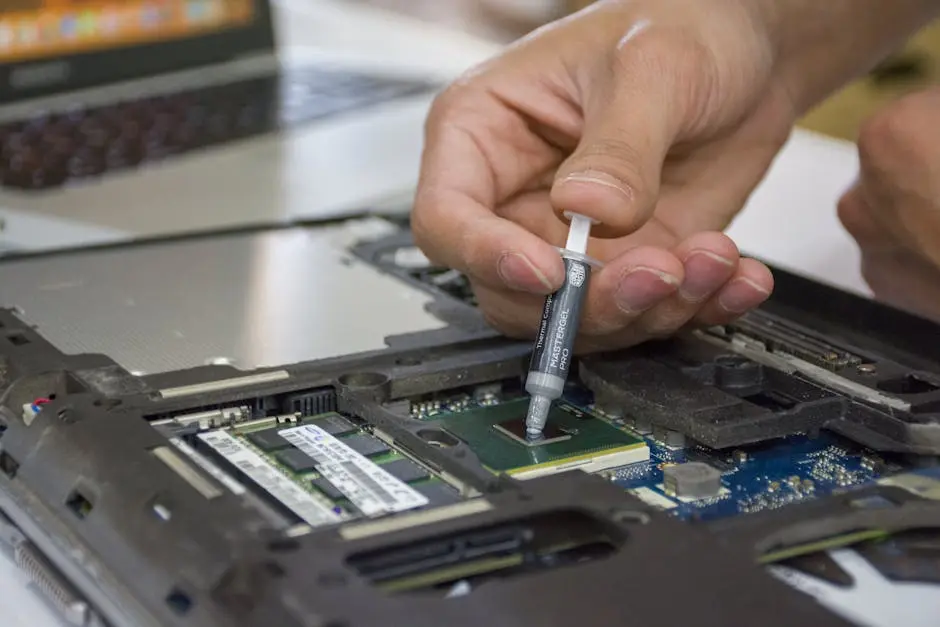In today’s fast-paced digital world, a laptop is an essential tool for work, study, and entertainment. However, frequent use can lead to overheating, which can affect performance and longevity. A functioning cooling system is crucial for maintaining your laptop’s efficiency, and replacing the fan can be a vital task to ensure continued performance. In this guide, we’ll explore everything you need to know about laptop fan replacement, including signs it’s time for a change, tools you’ll need, and step-by-step instructions.
Why Is Your Laptop Overheating?
Overheating in laptops is a common issue that can be attributed to various factors such as blocked vents, dust accumulation, or a malfunctioning fan. Understanding the root causes of overheating is crucial in addressing the issue effectively and timely.
The importance of laptop fan replacement cannot be understated. Similar to how a car engine requires a radiator to expel heat and ensure it operates efficiently, your laptop depends heavily on its cooling system to perform optimally. When components work overtime, they generate a substantial amount of heat. Without a healthy fan, this heat remains trapped, escalating the risk of damage and reducing overall performance. Understanding these basics is the first step towards resolving overheating issues.
Moreover, laptops, unlike desktops, have less space for airflow, making it easier for dust to accumulate and impair the fan’s efficacy. It’s like your laptop is perpetually running a marathon but is unable to shed the heat generated, leading to deteriorated performance and potential system failures. Regular cleaning and maintenance can prevent these heat-related malfunctions, ensuring your laptop remains a trusty companion rather than an overheated, whirring machine.
Signs It’s Time for a Fan Replacement
Before you embark on replacing your laptop fan, it’s important to recognize the warning signs. These may include abnormal noises, frequent crashes, slow performance, or the laptop feeling excessively hot to the touch.
Interestingly, one of the most telltale signs indicating the need for laptop fan replacement is the production of strange, often loud noises emanating from within your device. This is your laptop’s way of signaling that components might be straining or rubbing against dust-covered parts. If these sounds complement performance dips, like sluggish processing speeds or unexpected shutdowns, it’s time for an intervention. Addressing these symptoms early ensures that minor issues don’t evolve into costly repairs.
Another indication to watch for is the rise in surface temperatures even when performing light activities such as web browsing. If your device feels warmer than normal, this could signify that the fan isn’t doing its job efficiently. Keeping an eye on these subtle signals and understanding how they impact the overall performance of your laptop allows you to make timely interventions, enhancing longevity and efficiency.
Gathering the Right Tools
Having the correct tools is essential for a successful fan replacement. Typically, you’ll need a small screwdriver set, a soft brush or compressed air for cleaning, and possibly a static wristband to prevent any damage to internal components.
In undertaking a laptop fan replacement, it’s crucial to start with a clean slate, literally. Ensure you have the necessary tools on hand. A compressed air canister is invaluable for freeing choking dust from vents and fans, while a small screwdriver set is needed for opening the device’s case without damaging it. A static wristband is equally important, as it grounds you and prevents electrostatic discharge that might cause irreparable harm to sensitive components.
Step-by-Step Guide to Replacing Your Laptop Fan
Carefully follow these steps to replace your laptop fan, ensuring that you disconnect power and remove the battery before opening the case. Pay attention to how you disassemble components, keeping screws organized and noting where each piece belongs for reassembly.
Let’s delve into the nitty-gritty with a simple, step-by-step guide. Before you endeavor to replace your fan, ensure you unplug all power sources and cables to avoid electrical hazards. Begin by flipping your laptop upside down and removing the screws, making sure to keep track of their placement. Using your visual aids, note which parts connect where, as this will be crucial when you reassemble your laptop.
Testing and Maintaining Your New Laptop Fan
Once you’ve replaced the fan, it’s crucial to test its performance by running your laptop under various conditions. This section covers tips for maintaining your new fan, such as regular cleaning and monitoring temperature levels to prevent future issues.
Investing time in testing your newly replaced fan offers reassurance that all has been done correctly. Begin by powering up your laptop to observe the initial boot process. Listen carefully for any unusual noises and monitor temperature levels using available software tools. These simple checks will verify that your effort was successful.
Regular maintenance for your refreshed cooling system is paramount. Routinely clean air vents with compressed air to dislodge and prevent future dust buildup. Adhering to these practices can dramatically extend the longevity of your fan, allowing your laptop to operate with renewed efficiency.
Remember, keeping track of your system’s operational temperatures ensures that you catch any anomalies before they wreak havoc. Whether through software or manually feeling for excessive warmth, this practice helps you maintain a perpetuating cycle of efficiency and longevity for your device. Your proactive approach is what keeps your laptop humming smoothly and cooling efficiently.
Keep Your Laptop Running Smoothly
Replacing your laptop fan can seem daunting, but with some preparation and guidance, it’s a manageable task even for beginners. By taking the time to replace your fan, you’re investing in your laptop’s future, ensuring it runs smoothly and efficiently for years to come. Remember that maintaining your device can save you headaches and extend its life significantly. So, keep your laptop cool, and enjoy the peace of mind that comes with proper maintenance.

